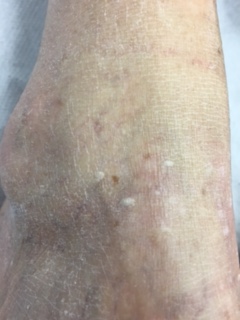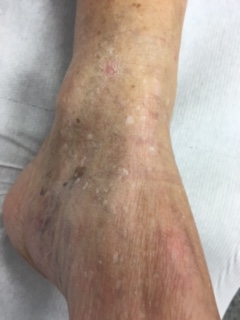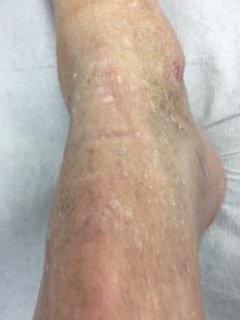STUCCO KERATOSIS
Luciano Schiazza M.D.
Dermatologist
c/o InMedica - Centro Medico Polispecialistico
Largo XII Ottobre 62
cell 335.655.97.70 - office 010 5701818
www.lucianoschiazza.it
Stucco keratosis was first described by Kocsard and Ofner in 1965. It is benign growth on the skin charactetized by aymptomatic, grey stuck-on papules with a dry/rough surface in the distal lower acral extremities. It is more frequent in the ankles. The lesions in many cases are numerous, from a few to many (as dozens), from 1 to 10 mm in diameter.
The lesions appear to be stuck on, hence the name stucco keratosis.
They affect the male population in general, aged over 40 years, without any hereditary transmission.



The cause of stucco keratosis is unknown but most patients are aged and report a history of prolonged, severe and excessive solar exposure.
Histologic examination shows a church spire–like epidermal hyperplasia similar to that in hyperkeratotic seborrheic keratosis is seen.
The cause of sebaceous hyperplasia is unknown. Exposure to sun, aging, immunosuppression are possible factors or cofactors of development.
Clinical diagnosis is not usually difficult. If the appearance is not typical, dermatoscopy can help: it is possible to see aggregated white-yellow nodules surrounded by branching vessels extending towards the center of the lesion without crossing it.
Because benign, lesions do not require any treatment. If they are cosmetically unfavorable, therapeutic options are cauterization or electrodesiccation, cryotherapy with liquid nitrogen, laser treatment, photodynamic therapy, excision.
Sometimes lesions tend to recur. Possible complications of therapy are scarring or transient dyspigmentation.
